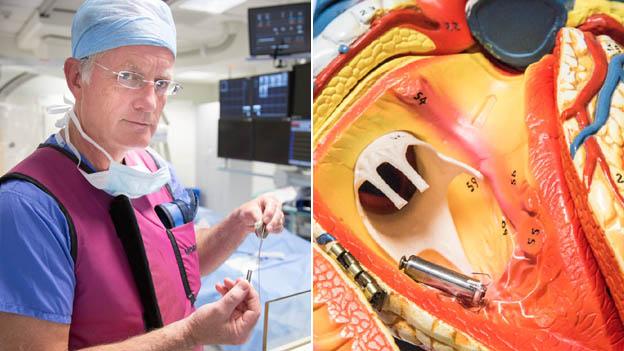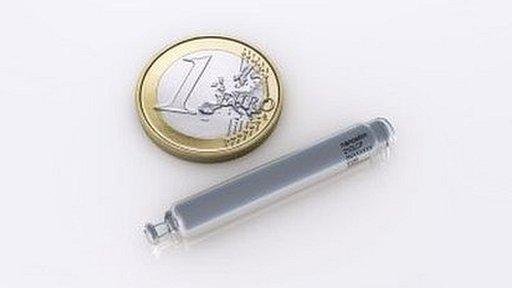'World's smallest' pacemaker
- Published
This new technology has several potential advantages.
Most important is the absence of a wire or lead which carries the electrical impulse from conventional pacemakers to the heart. These wires can come under immense pressure and can be a source of complications.
Standard pacemakers are implanted under the skin in the chest which can be a potential infection risk. By contrast, the tiny pacemaker used in these trials is inserted via a catheter from the groin and sits in the heart.
At 26mm long and weighing 2g, the Micra TM used in Southampton can claim to be the world's smallest pacemaker.
Southampton General is the only UK hospital which is taking part in a global clinical trial of the device.
A patient in Austria was the first to have the device implanted in December 2013. A rival system called Nanostim from St Jude Medical is also undergoing trials. It is 41mm long.
A third technology, external under development by EBR Systems combines a pacemaker implanted under the skin which wirelessly sends ultrasound energy to a receiving electrode - about the size of a grain of rice - implanted in the left ventricle.
- Published9 June 2014

- Published15 October 2013
